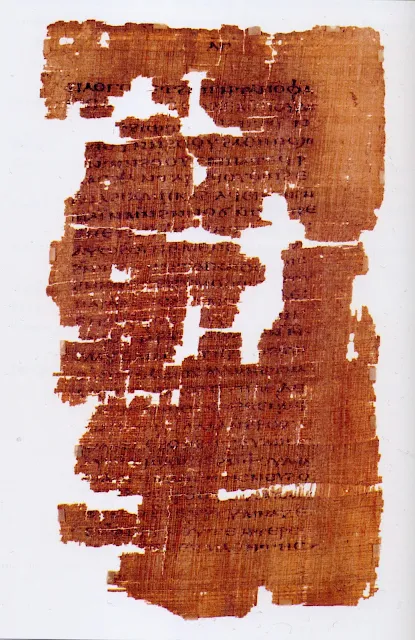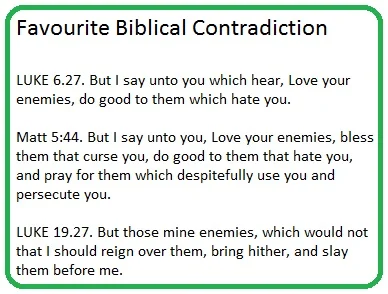
Written words, for some reason, seem to have added power as though truth can exist in a book, especially when written long ago.
St. Patrick was probably the first Bishop of Armagh. Despite countless stories and legends, very little is actually known about him with any certainty. The account of his capture by Irish pirates and enslavement, then subsequent escape, are taken from his
Confession which is the second oldest document in Irish history; the oldest being a
letter of excommunication from Patrick to the soldiers of King Coroticus (probably Caracticus who may have been Irish or British) for murdering some of his converts and enslaving others.
According to this
Confession, which seems to have been written to the British clergy to justify his claim to jurisdiction over the island of Ireland, he was captured by slave-raiders from Ireland and spent 6 years as a slave before escaping and returning to his home in Britain. He was probably the son of a Roman-British official of some importance whom Patrick says was a deacon, himself the son of a priest. If the slave-raid is genuine this would place Patrick somewhere on the West coast of Britain, probably between Cumbria and West Wales. He seems to have been fluent in Latin and may well have spoke Welsh, then the native British language south of the Scottish central valley and possibly north of it.
Ireland had been completely untouched by the Romans and consisted of a loose federation of warring chiefs and petty kings who nominally owed allegiance to a 'High King' of Tara (a sacred hill in Central Ireland) and subscribed to the 'Brehon Law', a Celtic tradition by which contracts, land disputes, marriage, etc, were settled. Patrick describes Ireland as
'in ultimis terrae' (at the ends of the earth) and
'usque ubi nemo ultra est' (as far as where there is no one beyond). The religion was essentially Druidic where the earth was a spirit with whom the High King symbolically united at his coronation, the ghosts of legendary ancestors stalked the land and an earlier people, the
Tuatha Dé Danann, still lived underground.
In his
Confession, Patrick claims to have been untaught and lacking in fluency, however, the construction of his arguments and his obvious mastery of Latin in the very document in which he makes that claim have led scholars to doubt this claim.
After his putative escape from slavery he trained for the priesthood and was eventually ordained as a bishop. He tells of a dream in which the people from 'Silva Vocluti' near the 'western sea' were calling him to come and walk with them once more, so he decided to return to Ireland and never seems to have left.
Whatever his motives and whatever the truth of his enslavement was, he quickly seems to have gained some authority amongst the scattered Christian communities which had already been established in the island. He had the backing of the Ui Néill with their considerable military and political power centred on Armagh which became the centre of the St. Patrick cult, one of several Christian cults in Ireland. The primacy of Armagh, and with it the cult of St. Patrick was papally endorsed in 1111.
One of the legendary 'contributions' St. Patrick made to Irish social and political development was the integration of the Brehon Law with Christianity, though this can be seen as a virtual replacement. The probably apocryphal story is that Patrick called all the chiefs together and went through each of the traditional laws explaining to them where they were right and proper according to the Bible and where they needed 'improving'. One of the 'improvements' was in stripping women of the right to property, inheritance, political power and divorce which they had enjoyed under the Celtic traditional law, which the entirely male chieftainship seems readily to have agreed.
The strategy Patrick adopted seems to have been the one the Pope told
St. Augustine to use in his mission to the Anglo-Saxons. It was the one which, judging by the multitude of local legendary saints found throughout France, Spain, Wales and elsewhere, seems to have been routinely employed by Christian missionaries, that of converting the religion, not the people.
The Christian Celtic church which Patrick established in Ireland gave rise in turn to the Columban Church established by
Colum Cille, or St. Columba, who was himself from the Ui Néill and influential among the Scoti tribe which established the kingdom of
Dal Riata based in Antrim, in Northern Ulster and extending across the Hebrides into Western Scotland. The term 'Scoti', originally the Roman name for the Irish, so gave us the name 'Scotland'.
Through St.Columba, Christianity was spread to the Picts of Scotland to establish Christianity in the North of Britain from where it penetrated Northumbria, one of the (then pagan) Anglo-Saxon kingdoms which had replaced Roman rule in England. The Irish Church had also penetrated Wales, especially the South West at St Davids and, so it is claimed, had supplied teachers and missionaries to the emerging Christian church in France. It was probably in France where Patrick had trained for the priesthood.
The Celtic Church, although nominally recognising the Pope in Rome as the head of the church, was for practical purposes, autonomous, and had it's own date for Easter, then the most important Christian festival, and an issue which still divides the Catholic and Orthodox churches.
This issue was eventually settled at the
Synod of Whiby, ostensibly called to settle the dating of Easter but actually to establish the authority of Rome over the Celtic Church and so the supremacy of the Augustinian Church based in Canterbury over the Columban Church, the political supremacy of the Anglo-Saxons over the Celts and of Wessex over the other Anglo-Saxon kingdoms.
One of the supreme ironies of Irish history is that the confiscated land of the last Earl of Ulster and last Gaelic Chief of Ireland, Hugh O'Neil, of the Ui Néill, direct descendent of Niall of the Nine Hostages, was the land upon which the Ulster Plantation was established and through which a concerted effort was made by the English to replace and expunge the Catholic Church which Patrick, through the Ui Néill, had originally helped to established.
But maybe the most interesting thing about St. Patrick, certainly from the point of view of an Atheist and anyone interested in how legends and myths grow and develop, are the
many stories and legends about St. Patrick's magical powers. Stories about banishing snakes from Ireland, crossing the River Loire using his cloak as a raft and then hanging it on a bush which promptly burst into flower, of healing the sick and curing the blind, of defeating the Devil in combat. There is no evidence for any of these things; they are fanciful stories woven around a historical figure who has been given exaggerated and elaborate powers which exist only in the imagination of the story-teller.
For example, the story that Patrick banished the snakes seems to have been invented in the 12th century by a Northumbrian monk named Jocelyn, whom the wife of the Anglo-Norman John De Courcy brought to her husband’s court in Downpatrick. The Graeco-Roman writer Solinus had already recorded the fact that Ireland was snake-free a good two hundred years before St. Patrick was born.
These stories tell us little of the actual person, but a great deal about the thinking of those who invented them and the culture from whence they came. A culture in which it was believed magic could be done with words and gestures, where animals obeyed the will of humans and a world populated by spirits and ghosts and where the Devil was fully expected to make a personal appearance. When collections of these myths and legends acquire the proclaimed sanctity of holy writ the stories become no more believable and no less magical than when they were invented and written down in the first place and yet many people believe they do.
I wonder what the resulting religion would have been had the stories of St Patrick and his magical powers ever gained the status of holy writ like the legends about Jesus did, instead of remaining attached to the religion and the culture which spawned them.

 Science is just the right tool for examining controversy.
Science is just the right tool for examining controversy. 



































